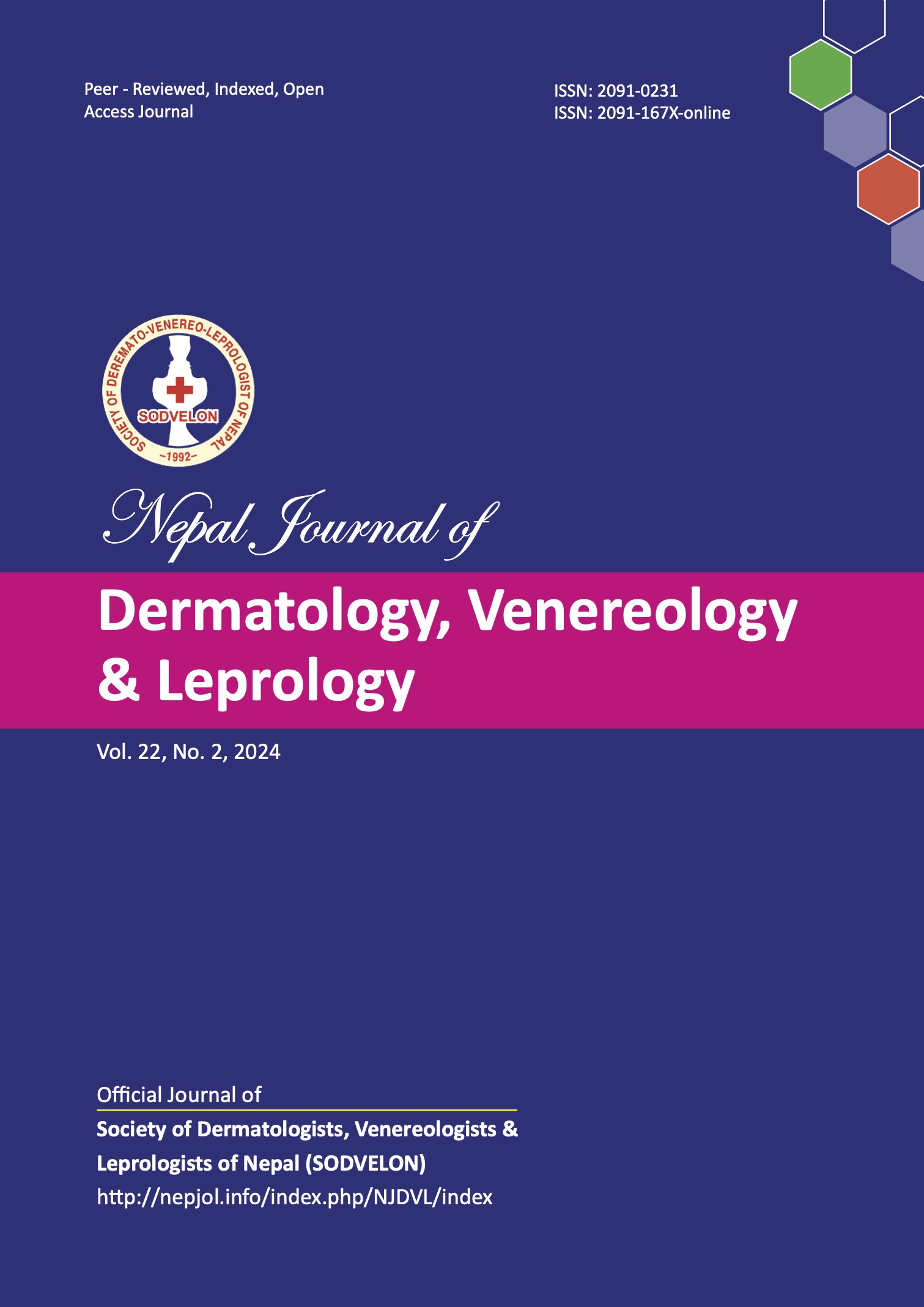Clinico-bacteriological Study and Antibiotic Sensitivity Pattern in Pyodermas at a Tertiary Care Hospital of Kathmandu
DOI:
https://doi.org/10.3126/njdvl.v22i2.68280Keywords:
Antibiotic sensitivity, Pyoderma, StaphylococciAbstract
Introduction: Pyodermas are common cutaneous bacterial infections caused mainly by Staphylococci. The causative organisms and their antibiotic sensitivity patterns are changing periodically.
Objectives: The study’s objectives were to determine the clinical and bacteriological profile in pyodermas and the antibiotic sensitivity pattern of isolated organisms.
Materials and Methods: It was a descriptive study conducted at the Department of Dermatology and Venereology and Department of Microbiology, Tribhuvan University Teaching Hospital, from October 2020 to September 2021, in patients with pyodermas. After history taking and examination,the swab was sent for culture and sensitivity. The details of isolated organisms and antibiotic sensitivity patterns were recorded.
Results: Eighty-five patients were included in this study, 55(64.7%) males and 30(35.3%) females. The typical age group affected was 15-24 years. Lower extremities were the most common sites involved. Primary pyodermas were more common than secondary pyodermas, 45(52.9%) vs 40(47.1%).Folliculitis was the most common diagnosis in 22(25.9%) patients. Staphylococcus aureus was the most common organism isolated in 46(54.1%) cases, among which 41 isolates were methicillin-sensitive while 5 isolates were methicillin-resistant. The second most common organism was coagulase-negative Staphylococciin 25(29.4%) cases. Staphylococcus aureus was most sensitive to cephalexin and cloxacillin in 41(89.1%) cases. Coagulase negative Staphylococci were most sensitive to gentamicin in 25(100%) and ciprofloxacin in 24(96.0%) isolates.
Conclusion: The change in the drug sensitivity pattern in the isolates of pyoderma warrants regular monitoring and judicious use of antibiotics to prevent the further disastrous development of drug-resistant strains of organisms.
Downloads
Downloads
Published
How to Cite
Issue
Section
License
Copyright (c) 2024 Society of Dermatologists, Venereologists and Leprologists of Nepal

This work is licensed under a Creative Commons Attribution 4.0 International License.
Copyright on any research article is transferred in full to Nepal Journal of Dermatology, Venereology & Leprology upon publication. The copyright transfer includes the right to reproduce and distribute the article in any form of reproduction (printing, electronic media or any other form).




